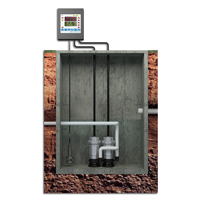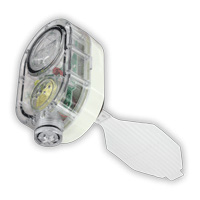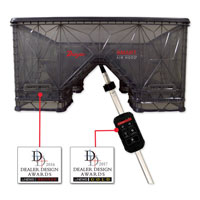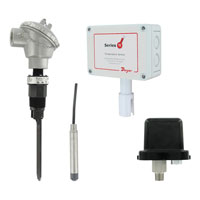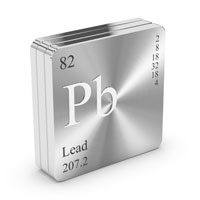 One of the most harmful and common substances to greatly affect people’s health is lead. Lead is a carcinogen which can be found in some percentage of most everyday materials. Varying forms of lead exposure can come from paint in older homes, dust, soil, and drinking water. To avoid health risk, individuals should take precautions to reduce or eliminate the possibilities of exposure. Ensuring and minimizing livestock and poultry exposure to lead contaminants helps to reduce human exposure via the food supply. Continue reading “Reducing Lead in Animal Watering Systems”
One of the most harmful and common substances to greatly affect people’s health is lead. Lead is a carcinogen which can be found in some percentage of most everyday materials. Varying forms of lead exposure can come from paint in older homes, dust, soil, and drinking water. To avoid health risk, individuals should take precautions to reduce or eliminate the possibilities of exposure. Ensuring and minimizing livestock and poultry exposure to lead contaminants helps to reduce human exposure via the food supply. Continue reading “Reducing Lead in Animal Watering Systems”
Ask the Expert – Measuring Wastewater Level with a PBLT2 Submersible Level Transmitter
Question: I have had difficulty reliably measuring the level in lift stations and was wondering what you have for such an application? Continue reading “Ask the Expert – Measuring Wastewater Level with a PBLT2 Submersible Level Transmitter”
What is Radon, and Why are We Testing for it in Our Homes?
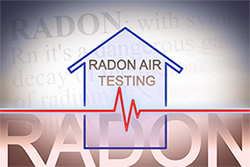 For anyone who has recently purchased or sold a home, they may have noticed a radon inspection clause in the purchasing agreement. What is radon, and why are we testing for it in our homes?
For anyone who has recently purchased or sold a home, they may have noticed a radon inspection clause in the purchasing agreement. What is radon, and why are we testing for it in our homes?
Radon is an odorless, colorless gas that is naturally released into the environment as a decay byproduct of radium. Radium is a decay byproduct of uranium which can be found in certain types of rock, soil, or water. Some areas have higher concentrations of radon due to the soil composition which leads to additional testing for radon. Continue reading “What is Radon, and Why are We Testing for it in Our Homes?”
Why Does the SMART Air Hood® Balancing Instrument Measure a Lower Flow than Traditional Air Flow Hoods?
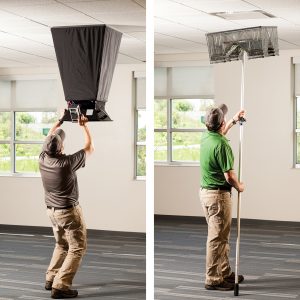 Many new users of the award-winning SMART Air Hood® Balancing Instrument (Series SAH) compare their new readings to those of their old, traditional air flow hoods. While the readings on a 3 cone step diffuser, 4 way diffuser and many return registers are very similar; users have noticed that swirl diffusers, slot diffusers and other directional diffusers give a lower reading on the SMART Air Hood® Balancing Instrument when compared to traditional air flow hoods. Continue reading “Why Does the SMART Air Hood® Balancing Instrument Measure a Lower Flow than Traditional Air Flow Hoods?”
Many new users of the award-winning SMART Air Hood® Balancing Instrument (Series SAH) compare their new readings to those of their old, traditional air flow hoods. While the readings on a 3 cone step diffuser, 4 way diffuser and many return registers are very similar; users have noticed that swirl diffusers, slot diffusers and other directional diffusers give a lower reading on the SMART Air Hood® Balancing Instrument when compared to traditional air flow hoods. Continue reading “Why Does the SMART Air Hood® Balancing Instrument Measure a Lower Flow than Traditional Air Flow Hoods?”
Enclosure Ratings for Personal Protection and Dust/ Water Ingress Protection
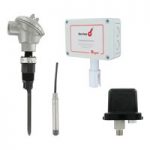
Many Dwyer Instruments, Inc. products have enclosures that are designed to be rated weatherproof, dust-proof, or even submersible. There are two main rating codes for enclosure protection classification: NEMA and IEC.
In the United States, the National Electrical Manufacturers Association (NEMA) has publication 250-2003, Enclosures for Electrical Equipment, that is commonly used for ratings. Underwriters Laboratories (UL) has similar ratings to the NEMA ratings. Meeting a NEMA rating on a product can be self-declared by the manufacturer based on product testing; whereas having UL approval to the rating requires testing by UL for proof that the product meets the standard. Continue reading “Enclosure Ratings for Personal Protection and Dust/ Water Ingress Protection”

